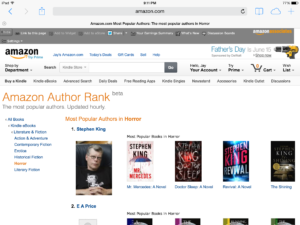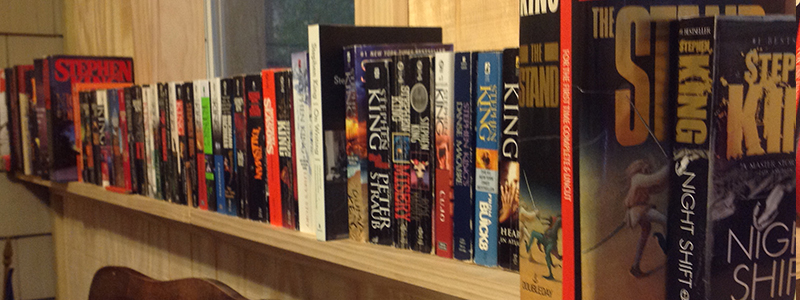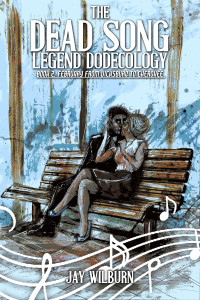by Jay Wilburn
The plan is to reread all of Stephen King’s works in the order that they were published. Richard Chizmar of Cemetery Dance had the vision. I’m doing it because I am a writer and I want to improve my long fiction. I think there is something to be learned through this challenge. As Richard Chizmar and Bev Vincent put up their posts on the official site, I will link those in the corresponding ones of mine on this blog.
Here is my Before Rage post to see where this went first.
Here is Bev Vincent’s historic Essay on Rage.
Here is Richard Chizmar’s essay after finishing Rage.
Here is the Guest Essay by Norman Prentiss on Rage.
Or go back to the beginning and start with Before Carrie.
Here is the link the Master List of all my #StephenKingRevisited posts.
But now it is time for Rage. So, let’s get it on …
I will strive to be spoiler free as much as possible dealing with specific examples in a general way, but I will be discussing content in these blog posts. So, you have been warned.
Rage was published in 1977 under the pen name Richard Bachmann. It is first person with short chapters which may be the “Bachmann Style” for King and the books he channeled that way. The book opens with “That’s when I started to lose my mind.” The narrative style is clipped and distant in the beginning. The feel of it shifts a bit as the story progresses.
King is probably least happy with this of all his published stories. His discussion of it alternates between dogging the story on style to being wary of the content due to the current and growing political climate around guns and mass shootings. His views on gun control are well known and I think he bristles a bit at thinking that he might have in any way glorified that culture of guns and gun violence. I go into detail on my views of the use of uncomfortable and controversial subjects, other examples of it with King in particular, and about Rage specifically in my Before Rage post. That link is available in the list above, if you want to see that discussion and my personal opinion/ conclusion on it. While there are some flaws in story in some keys scenes in the book, I think, entirely aside from the subject matter, there is more good character work in this story than King gives it credit for, I believe. Others have taken up his mantle of being adverse to this story which is difficult to find in print any longer. I think they miss some of the value in this story too as a result.

I think stories that tap into violent and traumatic narratives surrounding youth and do it well are sometimes catching onto aspects of being a teen in a public high school that the author may not fully realize they are capturing. Beyond the literal threat of gun violence in school in our modern world, high school feels like a violent and dangerous place emotionally and in every other way to many kids. Adults feel distant and disconnected from the threat in the eyes of the students. Their interventions feel inadequate and sometimes counterproductive. The kids feel that the adults and the society are just watching the threat from the outside as if in an arena. I believe the reason why the Hunger Games and other dystopian books directed at youth do well is because it describes exactly how they feel about school culture from their perspective even when there aren’t any guns around. I think Rage may tap on that to a degree in the hostages in the classroom in a psycho/social/sexual sense in the way the characters analyze all the ways they are held hostage by society.
There is a reference to Jaws in the story that comes back later in the narrative. There are a couple references to teeth in different ways that illustrate characters and threat.
Great lines early on: “I read too many books.” King may be giving us a peek into his own mind and the things that swirl through his head, teasing his sanity. “You can’t stop your mind. The damn thing keeps right on going.”
There is a scene early in the book of an intrusion into the school bathroom. There is a sense of the total lack of privacy within a school setting even in the bathroom where privacy is normally expected.
King has a mirror scene. That’s the sort of thing writers get criticized for now.
There is a reference to the typing room. I remember the typing room from my school days too. Such an odd idea out of time now with all those typewriters lined up on the tables. The drills and key practices we did then.
One of the early references to the father and son relationship which plays heavy in the background and motivations for the narrative: “Never ending mission to make a man out of a son.” The boy listens to his father’s drunk friends from the tent on a camping trip. He sees the horror through the light putting on a shadow show on the material of the tent. The father makes a reference to an Indian legend/practice and violence against women that scars our narrator in a way. There is a brief Indian reference later about the threat of scalping. Later, he states that little boys grow up remembering every blow and word of scorn … they grow up wanting to eat their fathers.
“It isn’t what you think.” The phrase is used to full effect with all it’s underlying threat.
There is a preceding incident of school violence. The principal tries to understand. We get our precipitating event as a result. “Don’t try to understand. Don’t lose any sleep over it.”
Our narrator uses this to try to take his power back. I think some of King’s discomfort with the violence in Rage compared to his violence in all other stories is the touch of painful truth. Normally, I think he strives for that in his stories. Here with it being about gun violence in schools, I think maybe he thinks he stepped too close to the step-by-step truth behind these incidents which weren’t seen as prevalent in 1977 as they are in the light of present times. “You used to scare me, but I don’t have to be scared anymore.”
There is a raw moment as the narrator is ramping up. I’m not sure it works. This scene and another near the end of the book loses its power for a few reasons, I think.
King mentions a picture of Raquel Welsh in the locker. An interesting piece for the time period. There is a goodbye scene to the items in the locker. The conflict with the narrator becomes about the idea of if you were about to cross the Rubicon, what would you do?
Letters to John Travolta are mentioned later.

“My wife and child are critically injured in a car crash, therefore I pray.” Sanity is defined through math axioms which is the type of classroom that the narrator is in.
The line between light and dark is called the terminator. This reference comes up a couple more times in the story. Later in the story, the terminator is used to talk about going from crazy to suddenly calm.
The narrator goes back up into the mind and relives the moments again. There are a few moments in the story where the characters experience surreal feelings about everything. This is shown outside the incident too as one character in particular talks about struggling with feeling that life was real at all.
The escape moment is missed which is something King has included in all his books up to this point in his writing. There is a moment at the onset of peril where the characters could avert it and escape the danger in the story before it sets in. It is a moment to look back on with regret. The window to fight back is presented in Rage and then closes, setting the main line of the story into motion.
“Squirrels make lousy innocent bystanders.” Great line. So odd and quirky.
School politics still remain in place even in the panic. The social order remains in place and is important to the story. kids live a life of violence both real and make believe. They want to be able to say, “I was there.”
Maybe one day emergency vehicles won’t scare the shit out of the people they are coming to save. Great theme in the story.
There is a roll call scene. One kid is out with the measles. That’s so specific to the time period. If a kid had measles today, that would be the center of the story.
The narrator goes after the football player that quit. Needling Ted until he felt awkward.
King uses the horror of disgust a few different ways in this story.
“Fuck the mentally disturbed and make them pregnant with sanity.” That is a pregnant line if there ever was one.
The narrator shows his command of the situation each time the intercom comes on. It is his conflict with the unseen authority of the adults each time. One time he plays a game where the adult asking a question will lead to death and undoes the adult and his authority in the process.
He compares insanity to a roulette wheel. Degrees going around. Stock cars going around.
“Kill all sluts” becomes a theme for the sexual pressures of society choking the life out of these kids in so many different ways no matter where they fall on a scale from virgin to experienced. A circle on the floor becomes an actual arena and accusations are thrown among a few other things. One character’s mom drowned a kitten. As the story progresses, accusations shift to confessions and the confessions become more detailed. There are trade offs and one-ups about what is shared in various categories of life between the characters.
A white puzzle with a blueberry in one corner becomes a great insight into character.
There is a reference in the story that might have been the kernel of an idea for the lawnmower man – the story … not the movie. It was another reference and comparison to teeth.
An uncomfortable moment at an uncomfortable party during one of the confessions is referred to as a “mass puberty camp.”
A cop on the intercom is referred to as a heavy breather. It reminds the narrator of something he dislikes about his own father. He thinks of it as a homosexual sound. He will use it to unnerve and undermine adult authority again. The narrator also makes a joke about “certain transsexual tendencies.”
“None of us gets out of here alive. Even my old man knows that.” Interesting line.
There is a footnote used in the narrative. I don’t know that I’ve ever really seen one used in quite that way in a fiction piece like this before. It is a flashforward of sorts.
“I could still hear blue grass playing in my head.” A unique way to talk about the individual character’s experience of being high.
“And that’s when I woke up screaming with an erection.” Great line.
“Lunacy is when you can’t see the seams where they stitched the world together anymore.” Another neat line.
“Gravity proves the existence of God … but there’s no such thing as gravity. The Earth just sucks.” Interesting.
The Stockholm incident for which the Stockholm Syndrome got its name took place in 1973. The story’s main line is set in 1976 and the novel was published in 1977. Stockholm is not mentioned directly, but I wonder how much it played into his thoughts in crafting the story.
Like the earlier scene in the principal’s office, I question a particular scene at the end. There is a weakness in this scene that isn’t just about the scene being uncomfortable. The story logic in that bit was thin.
The story goes into a list of court documents and letters to close off the story which I don’t particularly like in most stories that use this technique. I’m still more positive on this story than many King fans and even the writer himself, I think.

Join me for the first short story collection in King’s long career with Night Shift. Here is Before NightShift.
Thank for revisiting Stephen King with me.
Hope you will continue to follow along. I try to do posts on some subject here on the blog every Thursday and a video each Tuesday. Videos appear on my YouTube channel, on the Jay Wilburn author page on Facebook, and I’ll pop in on Periscope from time to time.
I’ll keep you posted,
— Jay Wilburn, writer
#StephenKingRevisited
Check out Book 2 of the Dead Song Legend by Jay Wilburn.
 Jay Wilburn lives with his wife and two sons in Conway, South Carolina near the Atlantic coast of the southern United States. He has a Masters Degree in education and he taught public school for sixteen years before becoming a full time writer. He is the author of many short stories including work in Best Horror of the Year volume 5, Zombies More Recent Dead, Shadows Over Mainstreet, and Truth or Dare. He is the author of the Dead Song Legend Dodecology and the music of the five song soundtrack recorded as if by the characters within the world of the novel The Sound May Suffer. He also wrote the novels Loose Ends and Time Eaters. He is one of the four authors behind the Hellmouth trilogy. He cowrote The Enemy Held Near with Armand Rosamilia. Jay Wilburn is a regular columnist with Dark Moon Digest. Follow his many dark thoughts on Twitter, Instagram, and Periscope as @AmongTheZombies, his Facebook author page, and at JayWilburn.com
Jay Wilburn lives with his wife and two sons in Conway, South Carolina near the Atlantic coast of the southern United States. He has a Masters Degree in education and he taught public school for sixteen years before becoming a full time writer. He is the author of many short stories including work in Best Horror of the Year volume 5, Zombies More Recent Dead, Shadows Over Mainstreet, and Truth or Dare. He is the author of the Dead Song Legend Dodecology and the music of the five song soundtrack recorded as if by the characters within the world of the novel The Sound May Suffer. He also wrote the novels Loose Ends and Time Eaters. He is one of the four authors behind the Hellmouth trilogy. He cowrote The Enemy Held Near with Armand Rosamilia. Jay Wilburn is a regular columnist with Dark Moon Digest. Follow his many dark thoughts on Twitter, Instagram, and Periscope as @AmongTheZombies, his Facebook author page, and at JayWilburn.com
Or begin the series with Book 1.








